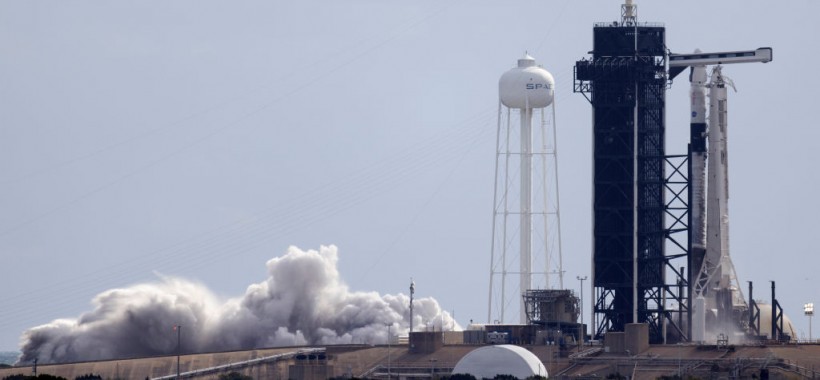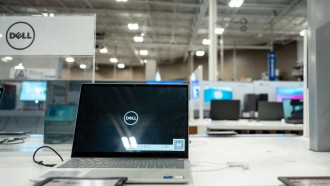Officials from SpaceX and NASA have confirmed that efforts to adapt the company's second Florida launch facility to accommodate Crew and Cargo Dragon missions are proceeding as planned, as reported first by Teslarati.

(Photo : Joel Kowsky/NASA via Getty Images)
CAPE CANAVERAL, FL - APRIL 20: In this handout photo provided by NASA, a SpaceX Falcon 9 rocket with the company's Crew Dragon spacecraft onboard is seen on the launch pad at Launch Complex 39A during a brief static fire test ahead of NASA's SpaceX Crew-4 mission, April 20, 2022, at the Kennedy Space Center in Cape Canaveral, Florida. NASA's SpaceX Crew-4 mission is the fourth crew rotation mission of the SpaceX Crew Dragon spacecraft and Falcon 9 rocket to the International Space Station as part of the agency's Commercial Crew Program.
Second Dragon Launch Pad
SpaceX started looking into the possibility of modifying its Cape Canaveral Space Force Station (CCSFS) LC-40 pad earlier this year after NASA expressed concerns about the dangers posed by plans to run its next-generation Starship rocket from the sole pad available for Dragon missions.
Both entities agreed to that strategy three months later, and according to SpaceX, hardware for the necessary adjustments is already under development.
After two false starts in 2019 and 2020, SpaceX started working quickly to build the first Florida launch site for Starship this year at the LC-39A pad it rents from NASA's Kennedy Space Center (KSC), according to Teslarati.
Pad 39A is the only location right now that can launch Crew and Cargo Dragon spacecraft on Falcon 9 rockets due to a number of upgrades and enhancements to the Space Shuttle infrastructure.
Teslarati further notes that Starship won't have much of an influence during normal operations because it is only 1000 feet (about 300 m) away from 39A's current Falcon and Dragon launch facilities and access tower. However, the program has a track record of creating prototypes that occasionally detonate.
SpaceX's Crew Dragon is the sole spacecraft that can support NASA's presence of normally 4-5 people at the International Space Station (ISS) until late 2023.
Boeing's Starliner crew capsule is expected to conduct its first crewed test flight (CTF) no earlier than February 2023, despite being years behind schedule.
Starliner's First Operational Transport
The first operational astronaut transport voyage on Starliner may potentially happen in September 2023, but if it encounters problems along the way, it might happen in 2024, according to Teslarati.
Both unmanned test flights of the Starliner have so far shown serious problems that have taken months of additional work to fix. It took SpaceX 15 months to reconstruct the launch pad after a Falcon 9 rocket explosion at LC-40 in 2016 caused damage that effectively required a complete rebuild.
Teslarati noted that if a Starship launch failed and damaged the Falcon and Dragon facilities at Pad 39A at some time over the next 12 to 18 months, it could certainly endanger NASA's capacity to sustain the ISS if Boeing was unable to take over.
There is still no information about the kind of advancements LC-40 will require. SpaceX would need to build a new escape system, crew access tower, crew access arm, and an astronaut bunker on-site to meet NASA's demand that SpaceX builds facilities similar to those at Pad 39A.
Related Article: SpaceX's Giant Crane Spotted at NASA Kennedy Space Center; Here's How It'll First Starship Florida Launch Tower
This article is owned by Tech Times
Written by Joaquin Victor Tacla





